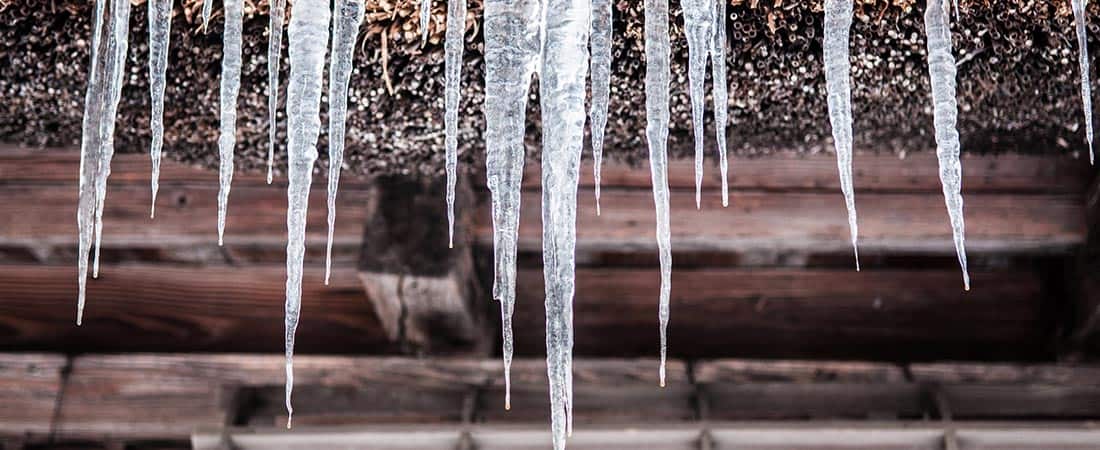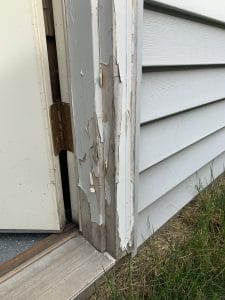Winter home maintenance tips
By Cody Lewis, Pro-Tech Home Inspection Services
Dealing with snow is just a part of life here in the northland. Besides shoveling a path to your house and clearing a space to park your car, it is wise to take a lap around your home and look for ways to mitigate the effects snow can have on your home’s structure and its major systems.

First, if you have a high efficiency gas furnace, boiler, water heater or other appliance that is exhausted through the roof or a sidewall, it is critical to ensure that it has not been covered by drifting snow. By design, high efficiency units exhaust less heat than their lower efficiency counterparts (which means more of the heat is being distributed through your heating ducts or hot water, which is a good thing). One side effect of this is being more prone to blockage from snow. Many high efficiency gas appliances utilize sealed combustion that also draws intake air from the outside through the roof or sidewall. If these become covered with drifted snow, it can prevent the appliance from operating or lead to accumulation of carbon monoxide inside the home. Both of these situations can be very unfavorable. In addition to taking steps to ensure the exhaust is clear, it is absolutely critical to ensure you have operable carbon monoxide alarms on each level inside your home, especially at the time of year when snow is drifting and temperatures are plummeting.
In addition to the gas appliances vents, natural gas companies recommend clearing snow from your gas meter as well. The gas meter’s regulator has a vent that must be kept clear of snow and ice to ensure proper flow of natural gas. A clogged vent may mean no gas flow, which can mean gas appliances will not work. This can cause serious problems if you are away from home and your heat stops working, including burst water pipes if temperatures inside the home drop below freezing. Most utilities publish simple guides on how to safely clear snow from the meter.
It is also a good idea to clear excessive snow from your roof and deck. If you allow a large amount of snow to accumulate and remain on these surfaces, the resulting weight puts a great amount of stress on the structural components such as the deck support posts & beams, roof framing components (trusses or rafters), roof decking and more. In addition to the stress caused by the weight, you are increasing your chances of ice dams and leaking when the snow melts. Ice dams are particularly likely on homes with poorly insulated attics, where warm air from the home reaches the attic space, warms the underside of the roof decking enough to melt the snow, which then trickles down to the soffit level where it re-freezes into dams of ice. Shingles are not designed nor intended to be “water proof,” and a sloped roof depends upon the principle of “shedding” water from one shingle to the next, down to the drip edge. If water is dammed up, it is very likely to leak past the shingles. A roof with a large amount of snow can easily experience these problems.
Also, keep an eye on your plumbing vent stacks. These are usually PVC, copper, or cast-iron pipes that stick up out of the roof. If the vent stacks become iced up or covered by snow, it can cause issues with your waste drainage. Plumbing vents are critical to ensure air pressures are regulated inside the waste drain pipes, and if they become covered with snow you may experience slow drains, “gurgling” noises, and siphoning of traps.
If you home is equipped with a radon reduction system, it is very prone to icing up. Radon fans are designed to run continuously, drawing warm humid air from the drain tile system or sub-soil and exhausting it to the outside. Naturally, the warm air will tend to freeze up once outside. Most of the time, since the fan runs continuously it will not freeze up. If you lose power or turn the fan off, it is highly likely that it will become frozen and not restart. If this happens, you either have to wait until it warms up or call a service technician to get the fan moving again. The best thing to do is leave the system running and periodically check the manometer.
Please remember to keep safety in mind at all times! If you are not comfortable, don’t be afraid to ask for help or hire out. Many handymen and contractors offer winter maintenance services at reasonable rates. Stay safe and stay warm!


